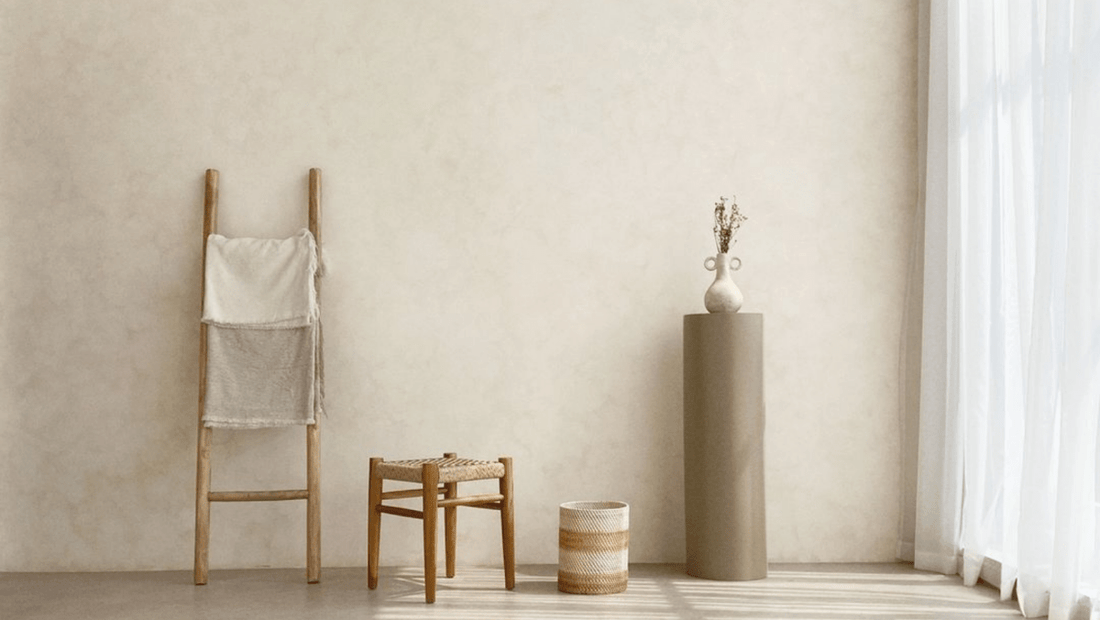Limewashing is an ancient method of painting that has been used for centuries in Europe and other parts of the world. This mineral-based paint is known for its distinctive, velvety finish that adds depth and texture to walls. Unlike modern acrylic paints, limewash is natural, breathable, and eco-friendly, making it a popular choice among homeowners and designers who value sustainability and aesthetic appeal.
In this guide, we will walk you through the process of measuring your walls for a limewash project. We will also explain of each product and provide guidance on their quantities per square footage. This same method works for calculating square foot coverage for wall paint as well!
Part 1: Measuring Walls for Limewash
Before you can calculate the quantities of limewash and other materials needed, you must first measure your walls. Here's how to do it:
-
Measure the Height and Width: Use a tape measure to find the height and width of each wall in feet.
-
Calculate the Square Footage: Multiply the height by the width to get the square footage of each wall.
-
Subtract for Doors and Windows: If there are doors and windows on the wall, calculate their square footage (height x width) and subtract it from the total wall area.
-
Add Up All Wall Areas: Repeat these steps for each wall you plan to limewash, then add up all the totals to get the overall square footage.
Part 2: Calculating Quantities of Materials
Once you have the total square footage, you can now calculate the quantities of each product needed. Let's break down what each product does and how much you'll need:
1. Lime-Prep Primer
Lime-Prep Primer is a crucial first step in any limewash project. This thin coat is applied with a microfiber roller or a block brush over a coat of standard water-based paint primer. It's designed to allow the limewash to adhere properly to non-porous surfaces surfaces (i.e. painted surfaces or drywall)
Coverage rates for the mineral Lime-Prep Primer are approximately 300 square feet per gallon. To calculate how much Lime-Prep you'll need, divide your total square footage by the coverage rate. For example, if your walls total 1,200 square feet, you'll need approximately 4 gallons of Lime-Prep.
2. Limewash
Limewash is the star of the show. This mineral paint is brushed on in layers to create the distinctive limewash finish. It's semi-transparent, but as it dries (and with additional coats) it builds to a more opaque finish. Typically, 2-3 coats are applied to drywall surfaces for full color and depth of finish.
James Alexander Limewash has a coverage rate of approximately 300 square feet per gallon for two coats. Our quarts cover approximately 75 square feet per quart (2 coat). To calculate how much limewash you'll need, divide your total square footage by the coverage rate. So, if your walls total 900 square feet, you'll need approximately 3 gallons of limewash.
3. Limewash Densifier
The Limewash Densifier is a special additive developed specifically for the final application of James Alexander Limewash on interior walls. It reduces the inherent chalkiness of pure limewash in wall areas that will be touched frequently. It also increases the durability of the limewash while maintaining the signature flat finish that limewash is known for.
The Densifier is added to the limewash at a 1 part Densifier to 4 parts limewash ratio. Its coverage rate is typically 300 square feet per quart. You'll typically need 1 quart of densifier for every gallon of limewash.
4. Sealer
The Sealer is used only in certain areas where additional protection is required. It changes the appearance of the finish, so it's always recommended to complete a sample area first to ensure the finish meets your design goals. Touch up coats are more challenging after you have sealed the limewash. This is due to needing to apply additional Lime-Prep Primer in any areas that you want to touch up. Applying the Lime-Prep Primer ensures that your limewash touch ups will adhere properly to the sealed surface.
The Sealer can be valuable in areas where the limewash finish will be splashed with water or other high-contact areas where limewash wouldn't be an option without additional protection. Its coverage rate is approximately 300 feet per gallon. To calculate how much sealer you'll need, divide your total square footage (for the areas you plan to seal) by 300.
Part 3: Final Thoughts and Tips
Measuring your walls and calculating the quantities of materials needed for a limewash project may seem daunting at first. However, with careful planning and some math, it becomes quite manageable. Always remember to err on the side of caution and order slightly more than you think you'll need, to allow for any unforeseen circumstances or errors in measurement.
It's also worth noting that these calculations are based on estimates. Actual coverage rates can vary depending on factors like the texture and porosity of your walls, the application technique, and more. Therefore, always consult with a professional if you're unsure about any aspect of your limewash project.
Limewashing is a beautiful, sustainable, and unique way to finish your walls. By understanding how to measure your walls and calculate the necessary materials, you'll be well on your way to creating a home that's both stylish and eco-friendly. Happy limewashing!

